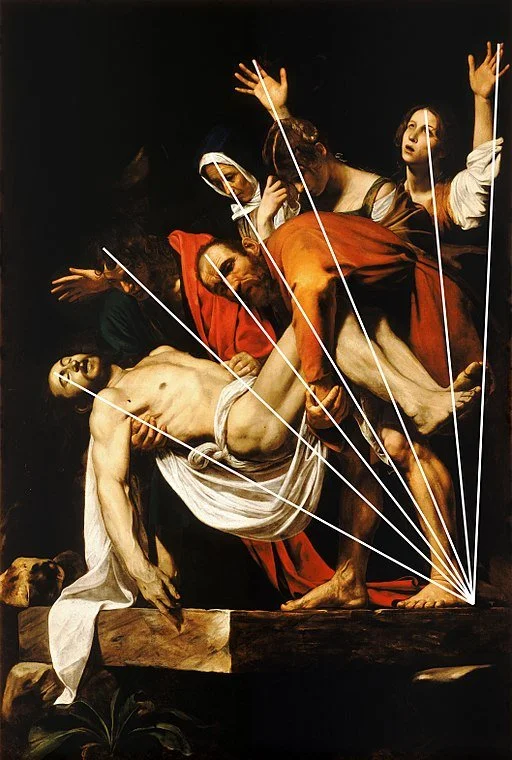The Orange Dilemma: When Art Needs More Than Beauty
A short film by Wong Fu Productions has been making rounds on Instagram, and it's sparked something in me that I can't quite shake. The clip shows an art student storming out of class after being pressured to explain the deeper meaning behind his painting of oranges. Before he leaves, the camera pans to another student who painted something vague but accompanied it with elaborate explanations—clearly a bit of artistic BS. The orange painter's final words before his dramatic exit: "I just want people to be moved by the shapes and colors of the painting. Isn't that enough?"
I found myself simultaneously agreeing and disagreeing with him, which sent me straight to the comments section to see how others were processing this moment.
The Great Art Debate
The comments were predictably divided but leaning heavily toward the orange painter's side: "Oh yes, THIS! So many art nowadays are made up and ridiculous!" "Exactly—why can't art just be something that IS?"
These responses are understandable. There's something refreshing about the idea of art existing purely for its own beauty, free from the weight of interpretation or the pressure to justify its existence with elaborate theories.
But here's where it gets complicated for me. As someone who craves function and purpose over pure aesthetics—my analytical side constantly needing order and reason to make my indecisive self feel more manageable—I can't help but question whether meaning in art is ever truly "made up."
The Unconscious Artist
Whether an artist discovers the meaning of their work before, during, or after creation, I don't believe it's ever fabricated from nothing. When artists create explanations after completing their work, perhaps their unconscious mind helped guide them all along. This has certainly been my experience. Despite being highly analytical and constantly questioning the "why" behind my work, I often find that things simply flow out as I'm creating—and later I realize something deep inside me wanted to emerge.
Through this lens, even the most seemingly abstract or "meaningless" explanation might be the artist's attempt to articulate something that was already present in the work, even if they weren't consciously aware of it during the creative process.
Beyond Technical Skill
Don't get me wrong—painting still life and shapes with technical perfection is an impressive skill that deserves admiration. But what happens after that initial moment of appreciation? What's left to think about once the "wow, that looks realistic" reaction fades?
This is where the orange painter's argument starts to feel limiting. Photographs and 3D printers can reproduce reality with stunning accuracy, so what distinguishes a painted orange from a photographed one? Is it purely the demonstration of human skill that we should praise?
Learning from Art History
Most paintings from the past—portraits, landscapes, even seemingly simple still lifes—carried stories and symbolism, even when they appeared to be straightforward representations. Renaissance portraits encoded status through hand positioning, conveyed virtue through specific flowers, or reminded viewers of mortality through carefully placed skulls. The lighting in a Caravaggio painting wasn't just beautiful—it was theatrical, spiritual, transformative.
Even the simplest objects in classical still lifes were loaded with meaning: a wilting flower for the passage of time, a broken chain for liberation, an hourglass for life's brevity. These weren't pretentious additions to otherwise "pure" art—they were integral to how these works communicated with their viewers.
Those historical works that didn't carry obvious symbolic weight were often exercises in skill-building, stepping stones toward creating something with deeper resonance.
The Power of Conversation
This is why I believe that even the silliest, weirdest art benefits from questions and exploration. A pretty orange that's just a pretty orange will be seen the same way by everyone who looks at it. But an orange that meant something more to the artist—whether that meaning was planned or discovered later—creates the possibility for conversation, for individual interpretation, for personal connection.
Made up or not, I believe art should challenge everyone to see beyond what's immediately visible. The human hand that painted those oranges, the particular choices of color and composition, the slight emphasis or distortion—these carry traces of the artist's inner world whether intended or not.
Take me with you, 2024, Acrylic on Canvas, 36×60
Finding Balance
The frustration expressed in those Instagram comments reflects a real problem with pretentious explanations that feel disconnected from the work itself. But we shouldn't let that frustration blind us to the legitimate human desire to find deeper meaning in what we create and consume.
The most powerful art often works on multiple levels—it moves you immediately through its visual impact, then rewards deeper investigation with additional layers of meaning. Understanding doesn't have to diminish wonder; it can deepen it.
Maybe the real question isn't whether the orange painter should have had to explain his work, but whether we as viewers and critics can hold space for both immediate aesthetic pleasure and deeper inquiry. Perhaps the goal isn't to choose between beauty and meaning, but to recognize that the most enduring art often contains both—whether the artist intended it or not.
After all, those oranges made him storm out of class. They clearly meant more to him than he was willing to admit.


